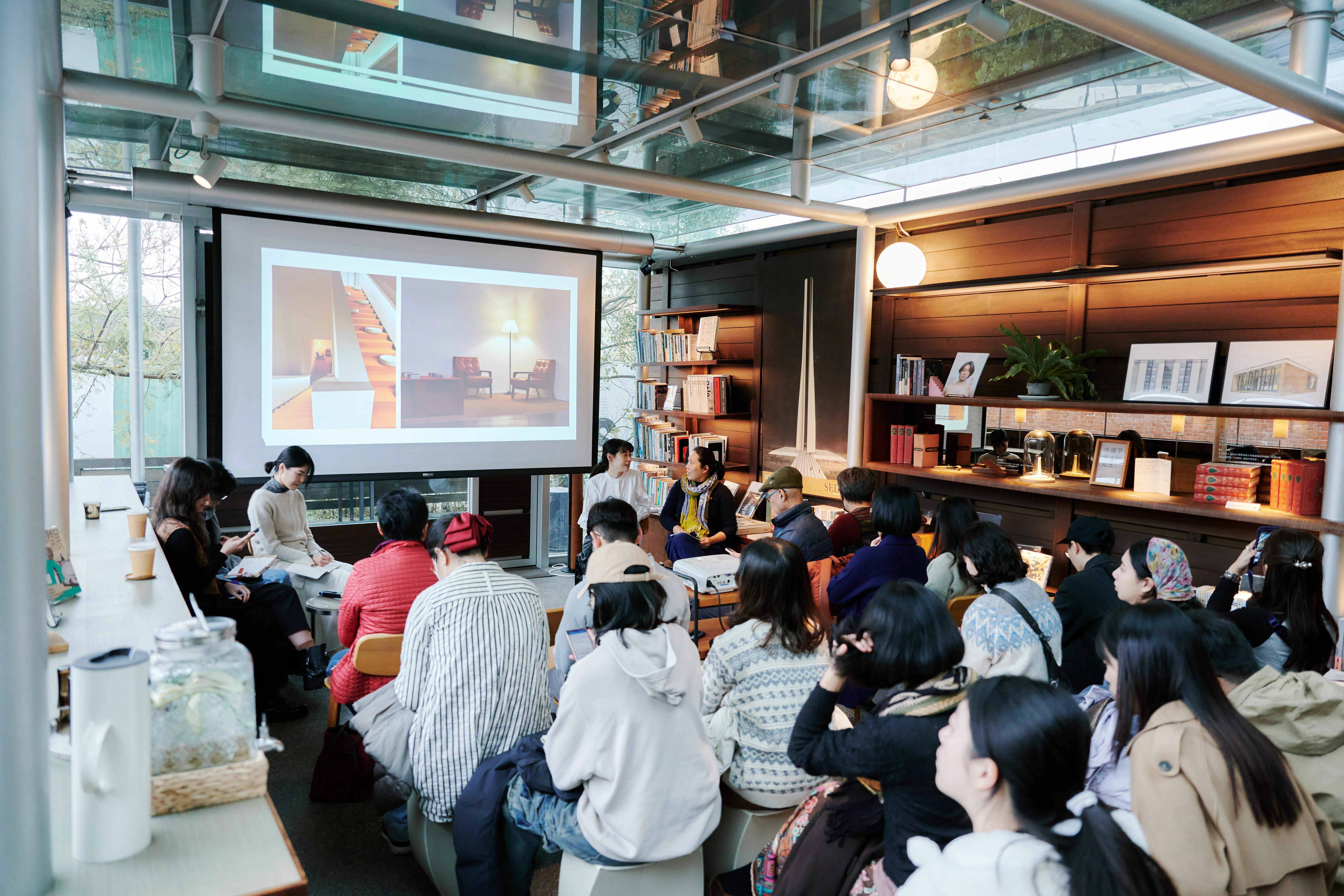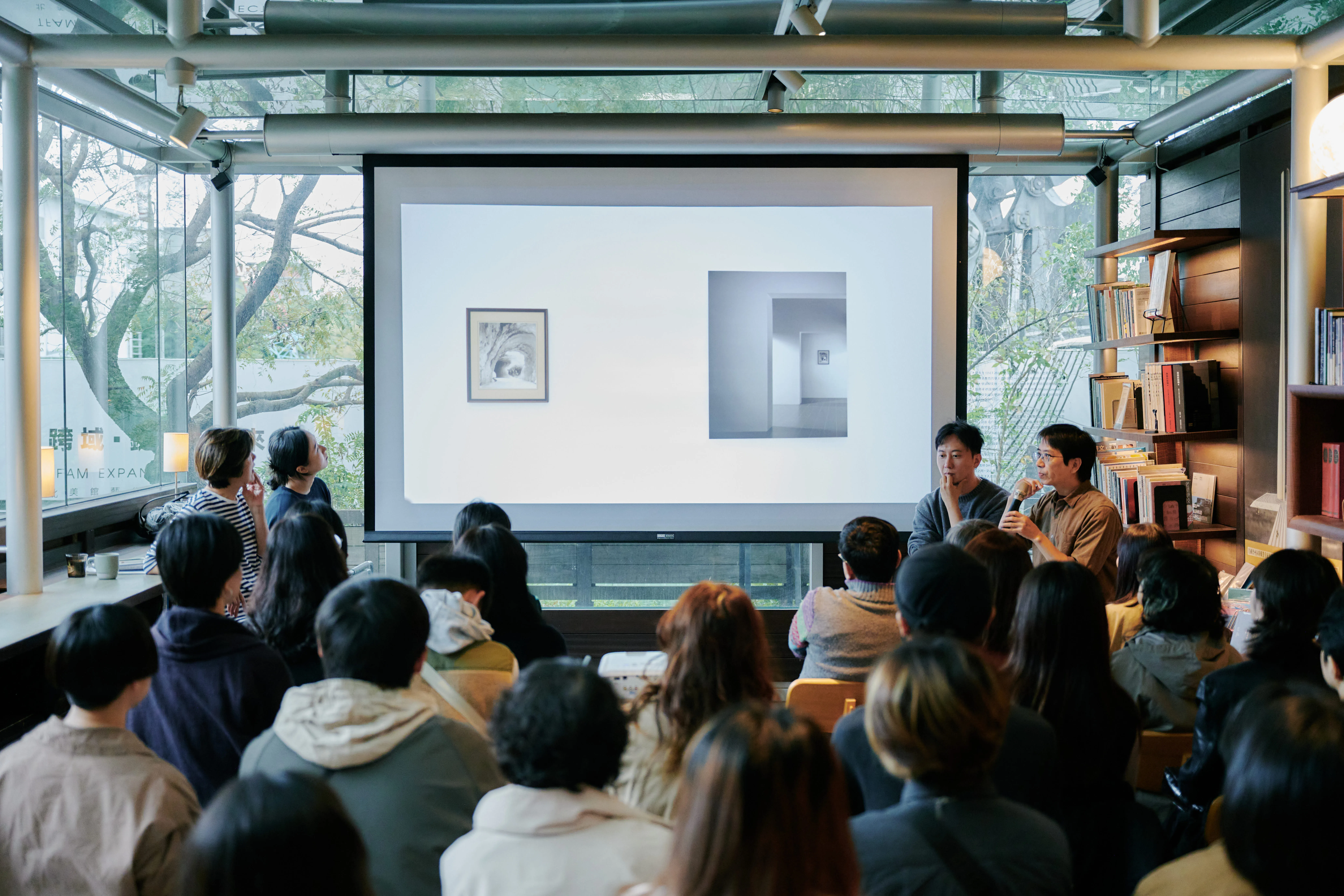
The Chimera Group.New Visions on Urbanism | City and Verticality
Speaker
Professor, Institute of Architecture and Urban Development, National Taiwan University, Zhihong Wang
Guest
Dr. Yu-Ting Kao, Ph.D., Institute of Architecture and Urban Development, National Taiwan University, Translator of “The World is Vertical”
Location
DH Café (No. 153, Section 3, Zhongshan North Road, Zhongshan District, Taipei City)
Fee
One session $1500 (including monthly reading books, expert readings, themed salon tips, guided reading notes)
Books
Gao Yu-ting, Wang Zhihong, “The World is Vertical”. FaceBook, 2020. (Original: Stephen Graham, Vertical: The City from Satellites to Bunkers)
Introduction
Chimera Reading Salon: New Perspectives of the City continues the spirit of The Chimera Group, a transdisciplinary arts society founded in the 1950s by Mr. Wang Dao, who often invited artists to meet in his home. The Chimera Group started from “architecture” and gradually expanded to performing arts, art, literature, photography, and commentary. Years of free and open cross-domain communication at Wang Daishi's home. With “City” at its core, the first series will invite Professor Wang Zhihong, Institute of Architecture and Urbanism, National Taiwan University, and special guests to explore new perspectives on urban space culture through six of his translated urban space books. The fourth lecture will be based on the book “The World is Vertical” and will lead students to an in-depth discussion through an introductory reading by Professor Wang Zhihong and by special guest Dr. Gao Yu Ting.
“The World Is Vertical”
When we get used to seeing the world flat, what do we miss and miss?
Newburgh University urban geologists lead readers from the heights, descending gradually along the vertical axis and deep beneath the surface; from flying objects above the city, the atmosphere, to the buildings, sheds and various high-rise structures in the city, to underground tunnels, shelters and sewers — layer anatomy Human rights, justice and social issues hidden in the vertical division of space.
Even as the days of technology change, from paper maps to Google Maps, maps have a habit of looking out over, drawn with flat blocks of colour and lines, and have always followed the old tradition of drawing that served European navigation, colonial activity and imperialism. For hundreds of years, this has flattened our imaginations of world geography unconsciously. However, modern technologies, which bring about the five and eight gates of new technologies, such as artificial satellites, airplanes, drones, etc., are constantly engaged in everyday life. On the other hand, construction techniques are constantly improving, and we are gradually moving away from all kinds of elevators, skyscrapers, corridors, underground tunnels, sewers, etc. Sh. Human urban life is becoming increasingly “rich”.
But in the world's ever-increasing population, what are the phenomena of aerial colonization, vertical domination, and land-based “space injustice” quietly brewing over the cities in which we live? And what is the social significance of continuing to dig deep underground cellars, sewers, landfills, and even in mines? With twenty-five years of interdisciplinary academic training, Professor Stephen Graham combines his expertise in the sociology of technology, urban planning, and geography to delve deeper into and explore these phenomena.
In addition to looking back at the views and perspectives of most people in the past, the book adds more levels and depth to the reader's perspective. The authors remind us that we should always be mindful of the complex interconnections between power, technology, politics and the vertical stratification of cities, not forgetting the importance of human concern and critical thinking in the development of global cities at this time.
Event Recap
When it comes to geography, most people think of two-dimensional maps that depict the world in lines and color blocks on paper, but the planar thinking of traditional geography is no longer enough to solve the complexities of contemporary society. In The World Is Vertical, author Stephen Graham explores the effects of verticality in politics, society, war, culture, and life from his background in cities, urban life, and geography. From the “satellite” at the highest point to the “mine pit” at the lowest point, the two-way vertical line not only travels to the sky but also to the center of gravity, traverses bodies of water, and even outer space. These vertical multilevel masses are juxtaposed with various powers that further influence people's lives and social relationships. And in many such as “Silver Wing Killer” (Blade Runner, 1982) and “Aquila” (AKIRAClassically differentiated urban structures can also be seen in classic science fiction works, such as 1988. Beyond the cyberpunk city that draws viewers through the layers of cyberpunk, it reflects the inequalities in real society. By describing the different heights of each chapter in the book, Graham questions these “vertical metaphors” that are often taken for granted by the general public, guiding the reader to reexamine the causes of these phenomena and uncover the issues in them, and to reflect on how these levels can be applied to the increasing intensification of contemporary society. Level gap.

.webp)
.webp)
.webp)
.webp)





